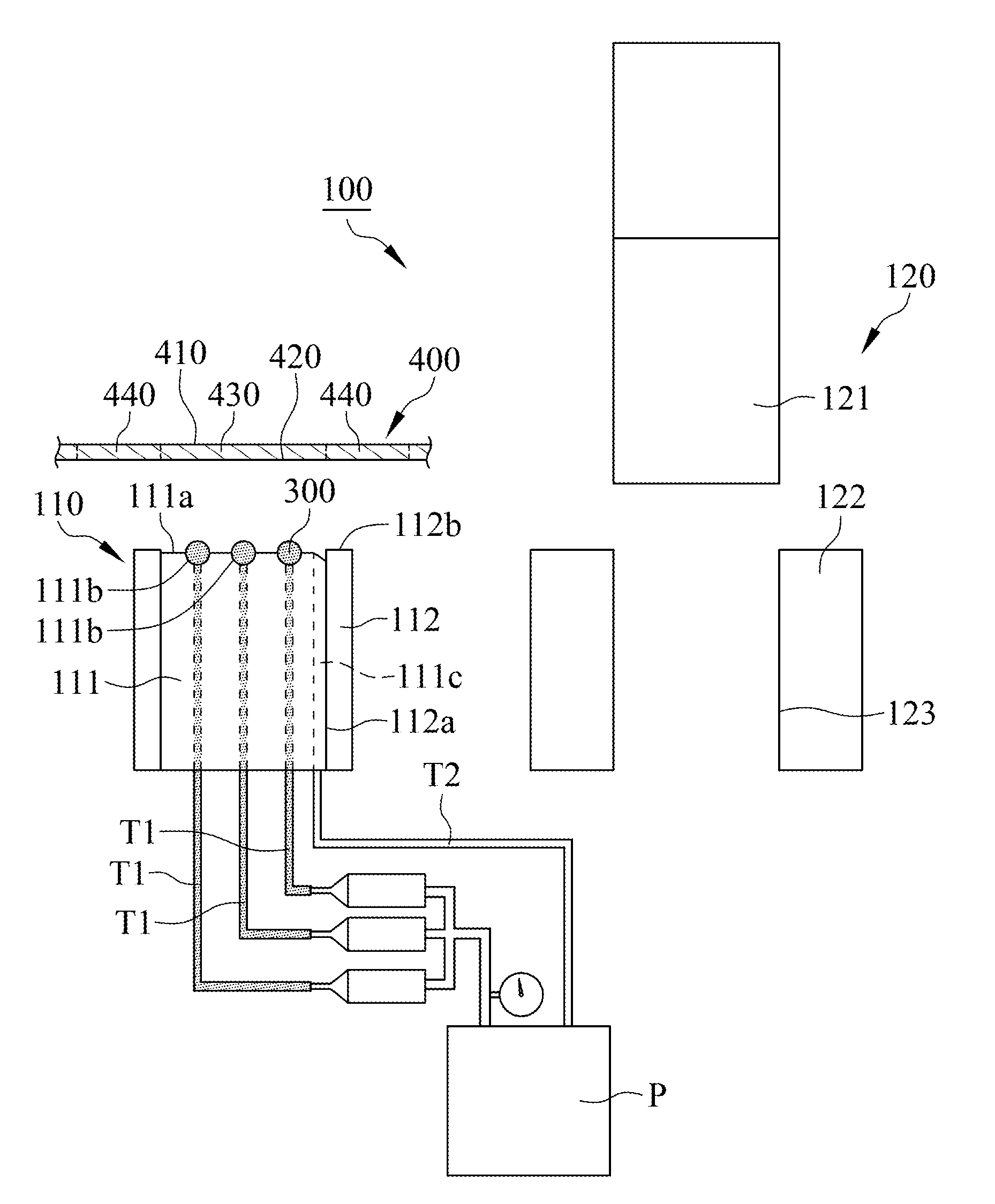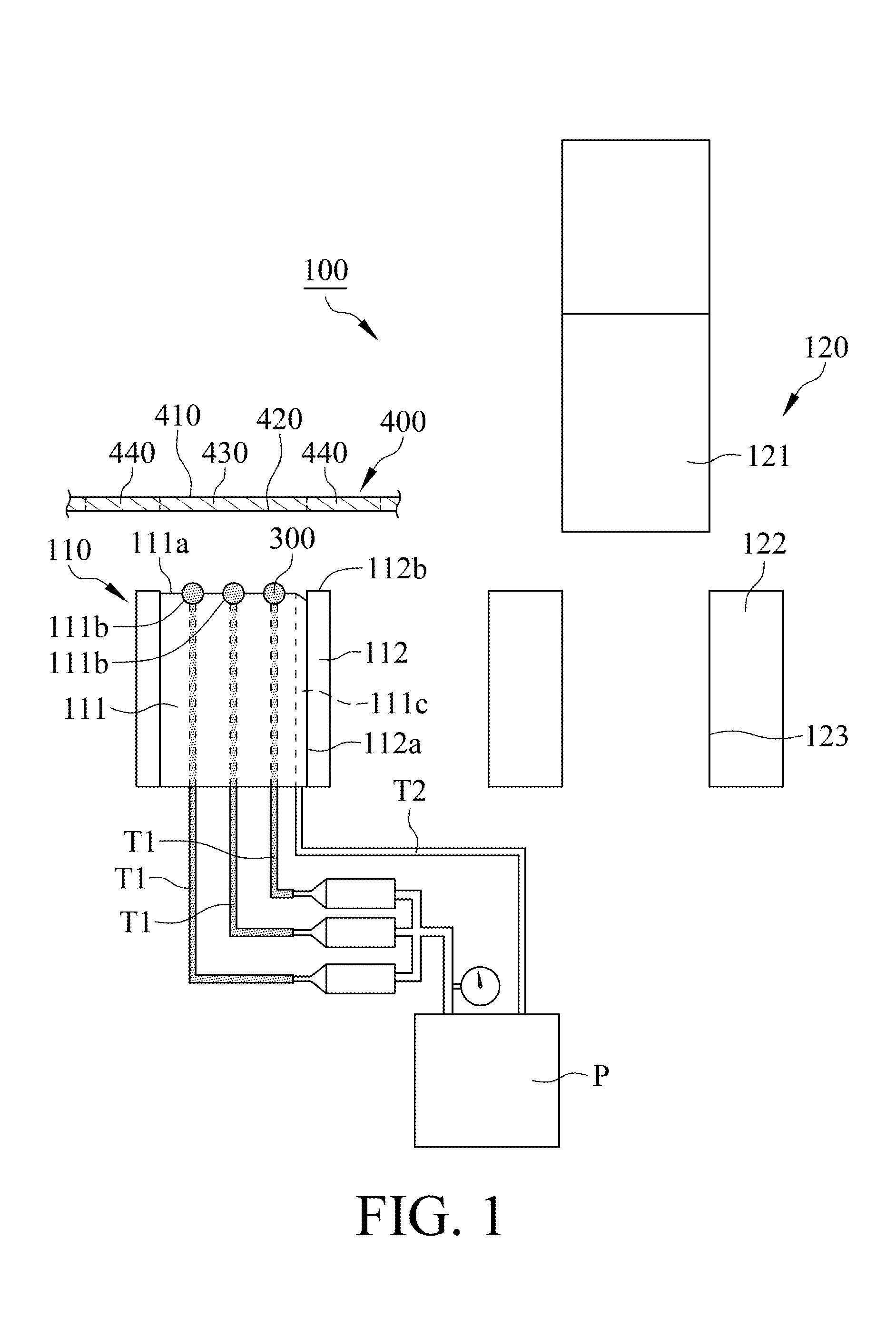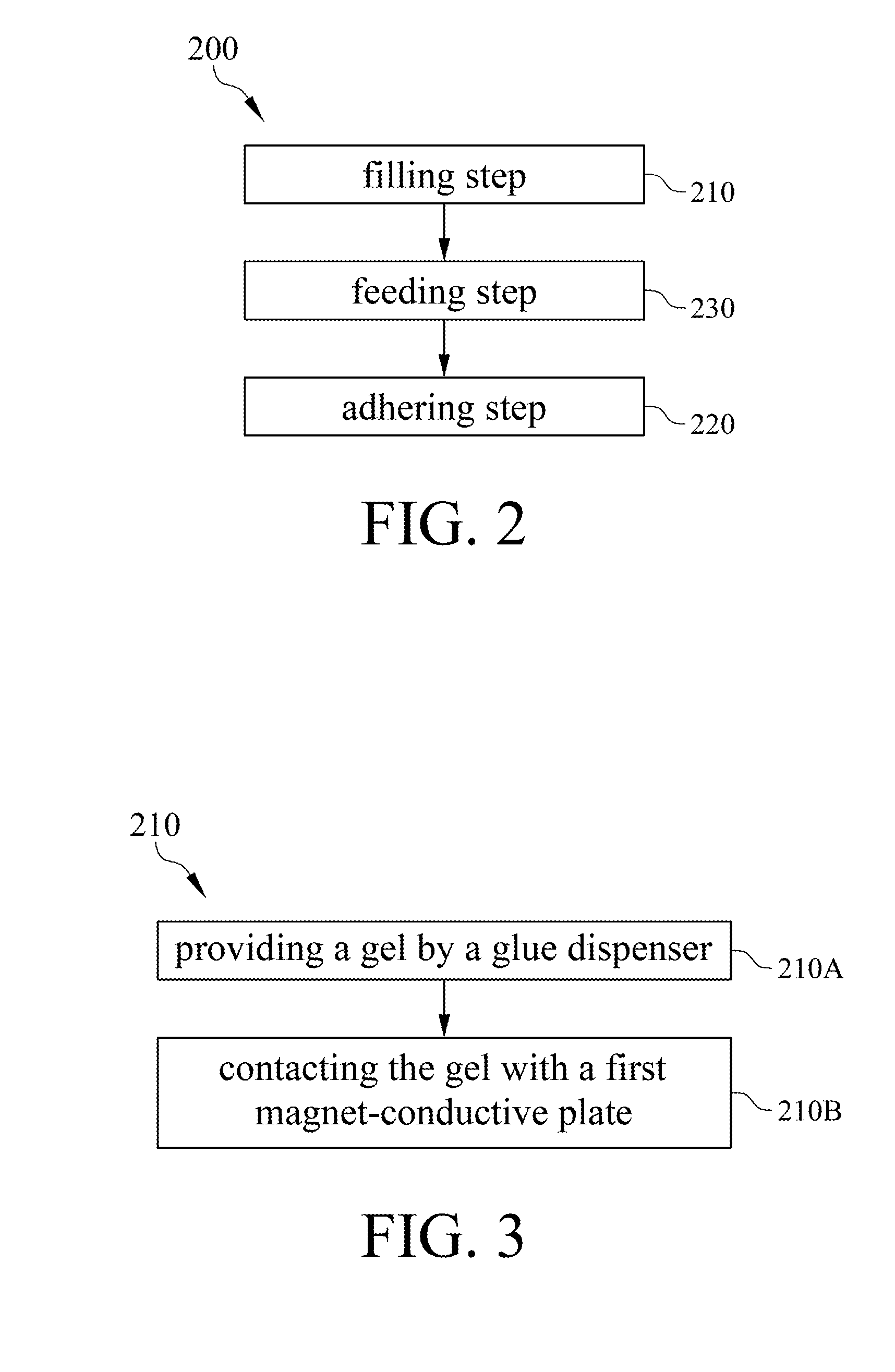Method for manufacturing a magnet-conductive device and apparatus thereof
a technology of magnet-conductive devices and manufacturing methods, which is applied in the manufacture of magnetic cores, auxiliary welding devices, paper/cardboard containers, etc., can solve the problems of large gap formed between adjacent silicon steel sheets, the eddy current loss and short issues of the riveting process, so as to prevent vibration and sound of wind shear, prevent iron loss, and avoid wind shear phenomenon
- Summary
- Abstract
- Description
- Claims
- Application Information
AI Technical Summary
Benefits of technology
Problems solved by technology
Method used
Image
Examples
Embodiment Construction
[0011]With reference to FIG. 1, an apparatus 100 for manufacturing a magnet-conductive device in accordance with a preferred embodiment of the present invention includes a glue dispenser 110 and a stamping unit 120. Please refer to FIG. 2, a method 200 for manufacturing the magnet-conductive device includes a filling step 210 and an adhering step 220.
[0012]Please refer to FIGS. 2 and 3, wherein the filling step 210 includes a first sub-step 210A of providing a glue by a glue dispenser and a second sub-step 210B of contacting the glue with a first magnet-conductive plate.
[0013]Please refer to FIGS. 1, 2, 3 and 4A, wherein in the first sub-step 210A of providing the glue by the glue dispenser, the glue dispenser 110 includes a base 111 and a substrate 112. Or, in another embodiment, the glue dispenser 110 merely possesses the base 111. In this embodiment, the substrate 112 comprises an accommodating slot 112a and a bearing surface 112b, the accommodating slot 112a is recessed to the b...
PUM
| Property | Measurement | Unit |
|---|---|---|
| magnet-conductive | aaaaa | aaaaa |
| magnet-conductive | aaaaa | aaaaa |
| conductive | aaaaa | aaaaa |
Abstract
Description
Claims
Application Information
 Login to View More
Login to View More - R&D
- Intellectual Property
- Life Sciences
- Materials
- Tech Scout
- Unparalleled Data Quality
- Higher Quality Content
- 60% Fewer Hallucinations
Browse by: Latest US Patents, China's latest patents, Technical Efficacy Thesaurus, Application Domain, Technology Topic, Popular Technical Reports.
© 2025 PatSnap. All rights reserved.Legal|Privacy policy|Modern Slavery Act Transparency Statement|Sitemap|About US| Contact US: help@patsnap.com



